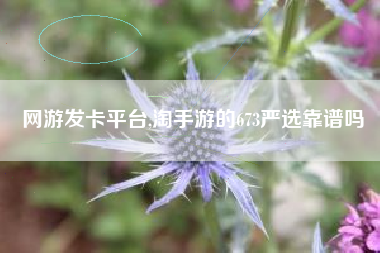本节我们学习 SVG 中的渐变。首先我们需要弄清楚什么是渐变,SVG 中的渐变可以理解为一种颜色到另外一种颜色的过渡,而这种颜色的过渡又分为两种形式,即线性渐变和径向渐变。本节我们会先学习线性渐变。

什么是线性渐变
我们先来看线性渐变,线性渐变就是直线的渐变,例如将不同的颜色从左向右进行渐变。我们可以使用 <linearGradient> 元素来定义线性渐变,这个元素必须嵌套在 <defs> 元素内部,<defs> 元素可以对渐变这类元素进行定义。
示例:
我们先来看一个线性渐变的例子:
<!DOCTYPE html> <html> <head> <meta charset="utf-8"> <title>SVG学习(9xkd.com)</title> <link rel="styleSheet" type="text/css" href="./style.css"> </head> <body> <svg width="500" height="150"> <defs> <linearGradient id="line" x1="0%" y1="0%" x2="100%" y2="0%"> <stop offset="0%" style="stop-color:pink; "/> <stop offset="50%" style="stop-color:bisque; "/> <stop offset="100%" style="stop-color:aqua; "/> </linearGradient> </defs> <rect fill="url(#line)" x="10" y="10" width="200" height="100"/> </svg> </body> </html>
在浏览器中的演示效果:
上述代码中,创建了一个渐变的矩形,其中 <linearGradient> 元素中的 id 属性是很重要的,可以为渐变定义一个唯一的名称,然后用到需要进行渐变的图形中。
线性渐变的属性
<linearGradient> 元素中有如下几个属性:
属性
描述
id
渐变色指定唯一的名称,便于引用该渐变色
x1
定义线起点的 x 坐标
y1
定义线起点的 y 坐标
x2
定义线终点的 x 坐标
y2
定义线终点的 y 坐标
gradientUnits
定义用于在渐变元素上指定的属性的坐标系,可用值有 userSpaceOnUse 和 objectBoundingBox(默认值)
gradientTransform
包含从渐变坐标系到目标坐标系的可选附加转换的定义
spreadMethod
确定如何填充超出定义的渐变边的形状,可选值有pad、reflect、repeat
当 x1 和 x2 不同,而 y1 和 y2 相等时,可创建水平渐变。当 x1 和 x2 相等,而 y1 和 y2 不同时,可创建垂直渐变。当 x1 和 x2 不同,且 y1 和 y2 不同时,可创建角形渐变。stop元素
<stop> 元素可以是 <linearGradient> 和 <radialGradient> 元素的子元素,用于定义渐变的成员。可以同时定义多个 <stop> 元素,一个 <stop> 元素可以定义一个颜色。
元素中的几个属性如下所示:
offset 属性:用于定义该成员色的作用范围,取值为 0% 到 100% 之间(或者0 到 1)。一般将第一种颜色设置为 0%,最后一种颜色设置为 100%。stop-color 属性:用于定义渐变成员的颜色。stop-opacity 属性:用于定义渐变成员的透明度。垂直渐变
上面那个示例中,我们定义了一个水平渐变的矩形,然后我们再来看一下如何设置垂直渐变。垂直渐变也很简单,只需要将 y1 和 y2 设置不同的值即可。
示例:
设置一个垂直渐变的矩形:
<!DOCTYPE html> <html> <head> <meta charset="utf-8"> <title>SVG学习(9xkd.com)</title> <link rel="styleSheet" type="text/css" href="./style.css"> </head> <body> <svg width="500" height="200"> <defs> <linearGradient id="line" x1="0%" y1="0%" x2="0%" y2="100%"> <stop offset="0%" style="stop-color:pink; "/> <stop offset="50%" style="stop-color:bisque; "/> <stop offset="100%" style="stop-color:aqua; "/> </linearGradient> </defs> <rect fill="url(#line)" x="10" y="10" width="200" height="200"/> </svg> </body> </html>
在浏览器中的演示效果:
角形渐变
角形渐变就是从对角线进行渐变,需要将 x1 和 x2 设置不同的值, y1 和 y2 设置不同的值。
示例:
<!DOCTYPE html> <html> <head> <meta charset="utf-8"> <title>SVG学习(9xkd.com)</title> <link rel="styleSheet" type="text/css" href="./style.css"> </head> <body> <svg width="500" height="200"> <defs> <linearGradient id="line" x1="0%" y1="0%" x2="100%" y2="100%"> <stop offset="0%" style="stop-color:rgb(253, 80, 67); "/> <stop offset="30%" style="stop-color:rgb(64, 135, 241); "/> <stop offset="70%" style="stop-color:rgb(235, 238, 67); "/> <stop offset="100%" style="stop-color:rgb(243, 87, 217); "/> </linearGradient> </defs> <rect fill="url(#line)" x="10" y="10" width="250" height="200"/> </svg> </body> </html>
在浏览器中的演示效果:






还没有评论,来说两句吧...